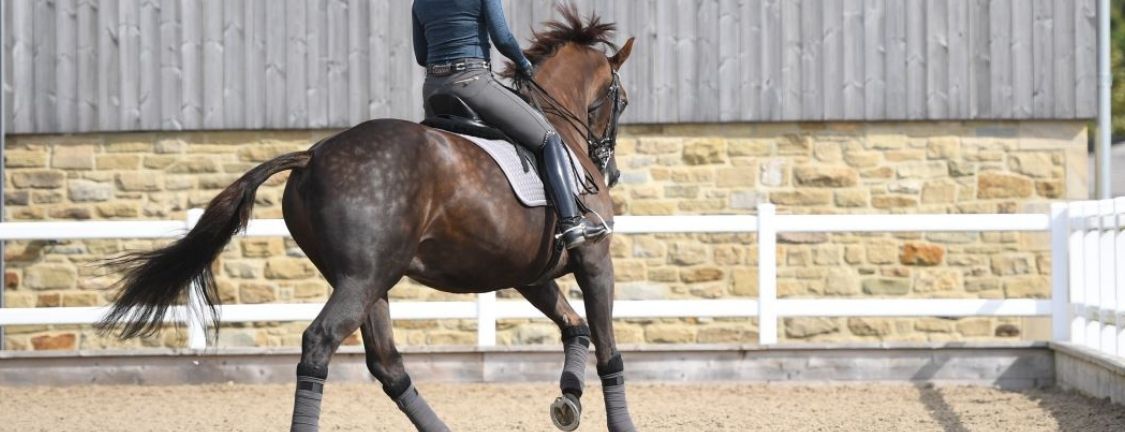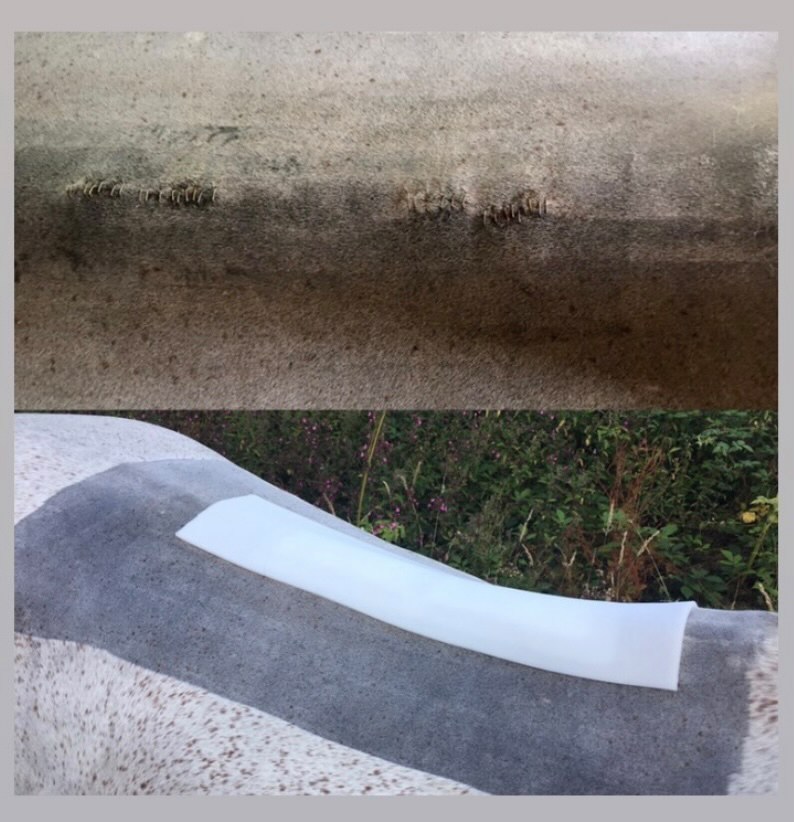
Most of us have heard of Kissing Spine - for many equestrians, it’s a term that sends shivers down their own spine. We want to understand what it is, how to spot it, and what treatments are out there for it. We spoke to vet Brian Reed MRCVS from Rainbow Equine Hospital for the lowdown on Kissing Spine.
What is Kissing Spines?
Kissing Spine is when the dorsal spinous processes in the horse’s back touch or impinge on each other – most common in the caudal thoracic region of the back (the area behind the withers where the saddle sits). That is the medical definition, the simple way to explain it is that it’s bone rubbing on bone. Hence the name kissing – the bones are touching or ‘kissing’. You might say it’s a bit of a strange name, it’s a painful problem, and spotting the signs early will help with the long-term prognosis.
How to check for Kissing Spines
Horses suffering from Kissing Spine will show signs of back pain. This can be displayed as being ‘cold backed’ and/or some will show discomfort when the girth is done up because pressure from the saddle bears down on the sore back. These horses often have a poor topline or a “razor” backed appearance. Some horses will be uncomfortable when mounted and for some, this will include bucking and becoming increasingly unsafe to ride.
What causes Kissing Spines in horses?
- Gradual onset – which happens when the horse lacks strength in the core muscles. The belly drops and the back dips down. This poor posture is a result of a lack of core strength.
- Due to a conformational problem. Horses that are short in the back are vulnerable and horses with long backs may not be strong enough to support the entire length of the back.
If you suspect a problem, check your tack first by asking a qualified saddle fitter to come out and watch you ride, it’s also worth getting out your physio to confirm that the problem is not ill-fitting tack, then call the vet. If your tack fits well, it’s time to call out the vet.
Are some horses more prone to Kissing Spine than others?
There isn’t a general theme with breed or background that indicates some horses are more prone to Kissing Spine, conformation and core strength can be a major contributor as can starting a youngster too early in their ridden career before they’re ready to carry the weight of a rider.
How to prevent Kissing Spines
A horse with good conformation and a strong core gives you a good base to help prevent Kissing Spine. You can help your horse to improve his core by doing lots of pole work exercises, carrot stretches, tail pulls and other exercises to work the core and neck. These sorts of exercises can be done daily along with the correct groundwork.
It’s crucial to ensure that your saddle fits correctly – have it checked by a qualified saddle fitter. And remember that the saddle should fit your horse just as much as it should fit you, as your horse changes shape with the seasons, it’s worth getting your saddle checked every six months. All horses change weight and size during the year depending on their diet and workload. Check the rest of your tack too – is anything pinching the horse, like the girth or a saddle pad? Regular treatments from an equine physio will also help your horse stay in tip-top condition.

How to treat Kissing Spines:
Three treatment types are available for Kissing Spine:
1) Improve the core strength of your horse with carrot stretches and the correct groundwork, this will help them to develop strength and a better posture. Work with your physio and maintain these exercises as an ongoing program for your horse.
2) Medical injections into the back can include Shockwave Therapy.
3) Surgery – of which there are two options:
a) Inter-spinous ligament desmotomy, cuts the ligaments between the spinous processes that are affected
b) Dorsal spinous process resection – this removes/re-shapes the bits of bones that are “kissing” to stop them from touching each other.
Surgical treatments generally have a good success rate if Kissing Spine is the primary problem. There are many stories of horses who have had Kissing Spine surgery and go back to compete successfully. Horses that undergo surgery for Kissing Spine will need four to six months in recovery time but the success rate is good.
There really is life after Kissing Spine.
You might also be interested to read Kaylie's Kissing Spine rehab story
Or follow Sarah Penney on Instagram as her horse Harry recovers from Kissing Spine surgery
About Brian Reed:
Brian was brought up in the Scottish Borders in a family with a strong veterinary background - he is the 4th generation to take up the profession. He graduated from Glasgow University Veterinary School in 2003 and after a brief spell working for his father’s practice, he moved to a large farm animal and equine practice on Teesside. Brian moved to Rainbow Equine in 2008 to pursue his passion for equine practice, specifically reproduction, lameness investigation and pre-purchase examinations. Brian gained the RCVS certificate in equine practice in 2010 and became a Director of Rainbow Equine Hospital in 2015. Brian is an FEI Permitted Treating Vet and has provided veterinary services at many national and international Eventing and Dressage competitions. He is also an Official Veterinarian (OV), enabling him to perform equine export examinations and certification. Brian leads the breeding services at Rainbow and enjoys working with performance horses.
Rainbow Equine Hospital is the largest fully-equipped RCVS Tier 3 Equine Referral Hospital in the North East of England. Rainbow offers advanced diagnostic and surgical techniques in state-of-the-art facilities and is staffed with progressive specialists in equine soft-tissue and orthopedic surgery, internal medicine, and diagnostic imaging.
